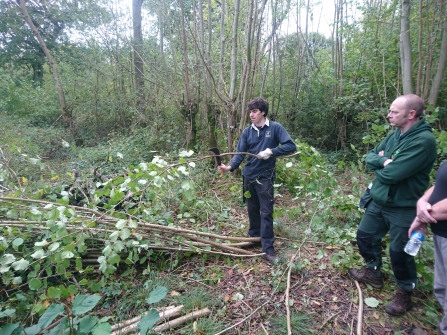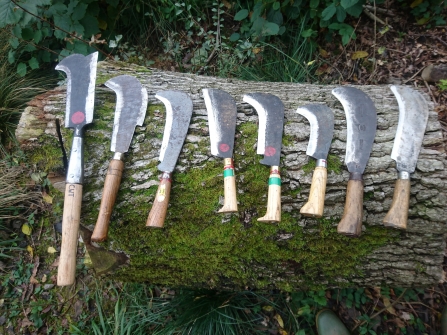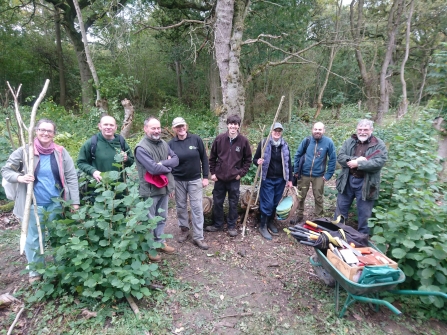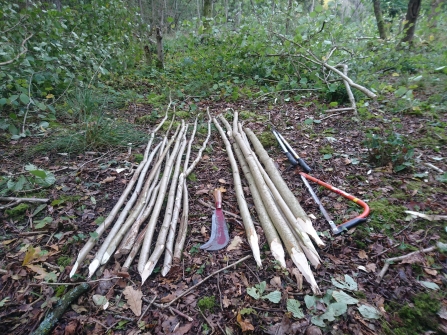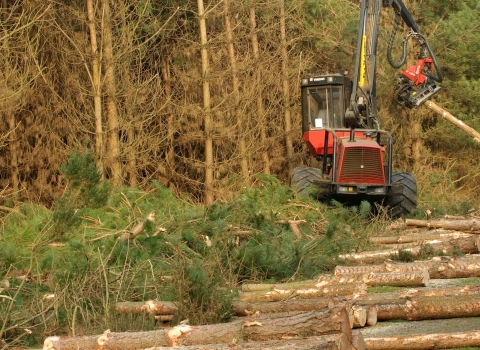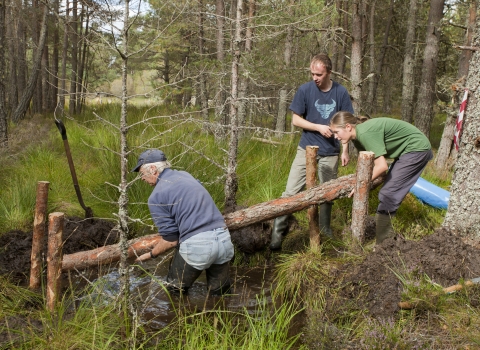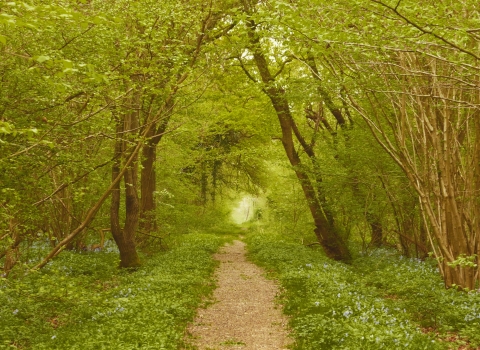The 12th to 20th October was National Coppice Week, which the Wildlife Trust BCN celebrated with a special two day coppicing workshop at Hayley Wood led by Reserves Officer and Coppice Worker Glenn Hadley. Having never done any coppicing before it seemed a great opportunity for me to learn more about this ancient tradition and why it’s so important in modern conservation. We were lucky with the weather and the woodland looked beautiful in the first hues of autumn colour.
As Glenn explained, the word ‘coppice’ comes from Old French and means 'a cut over forest’. It is a traditional method of woodland management that involves repeatedly felling trees at the base (or stool), and allowing them to regrow to provide a sustainable source of timber. Coppiced trees are generally allowed to grow between 5 and 20 years before they are felled (or coppiced). As a result the stems are relatively thin and round so they can be cut with hand tools, although chainsaws are also used. While the new stems are young the original stools can be hundreds of years old, having been carefully coppiced over many generations. The tradition itself is even more ancient. Archaeologists have found evidence of coppicing going back to the Neolithic period. Many species of tree can be coppiced including hazel, ash, lime, hawthorn, oak and aspen. In Hayley Wood we mainly worked with hazel.
The first thing Glenn showed us was the process of cutting down the tree stems and arranging them in a 'drift', a pile where each newly cut stem or branch is placed on top and slightly forward of the previous one. Properly arranged this allows for easier access when you come to use a billhook to fashion the tree stems into stakes, canes, bean poles, pea sticks, faggots and many other products for gardeners, hedge-layers, thatchers and anyone else who would like a coppiced product. I've personally found that a nice hazel rod makes a perfect hiking stick!


